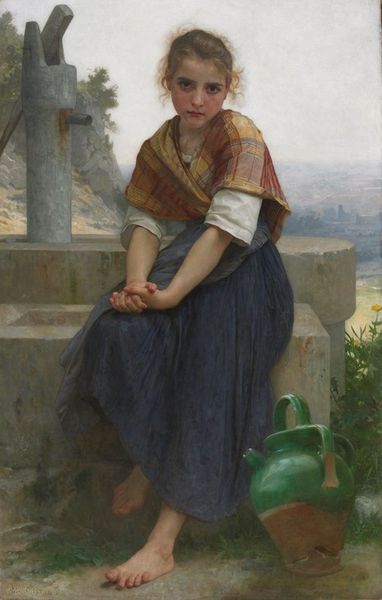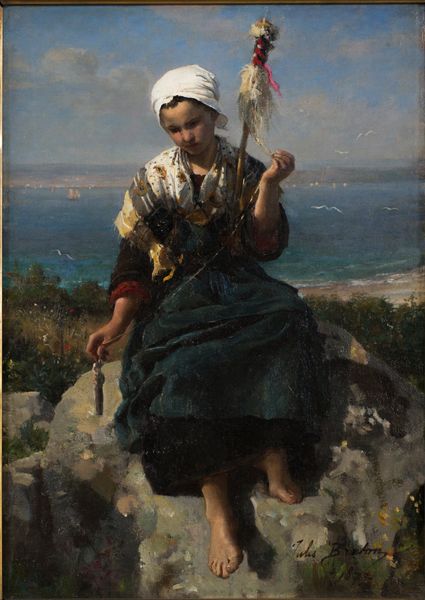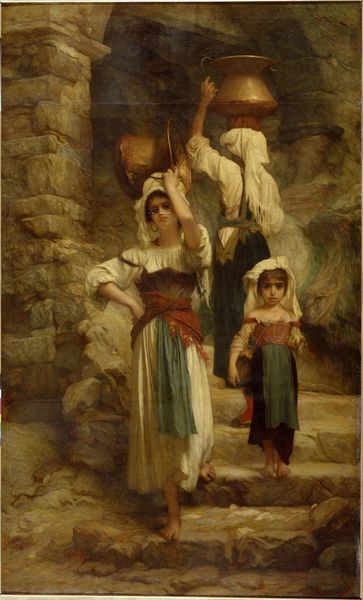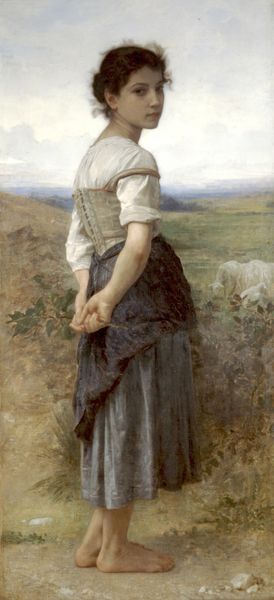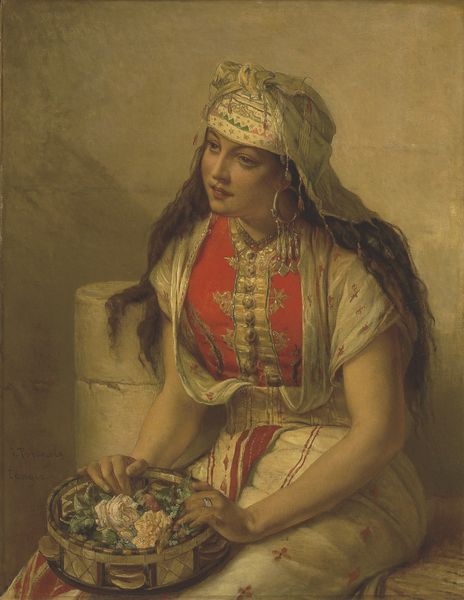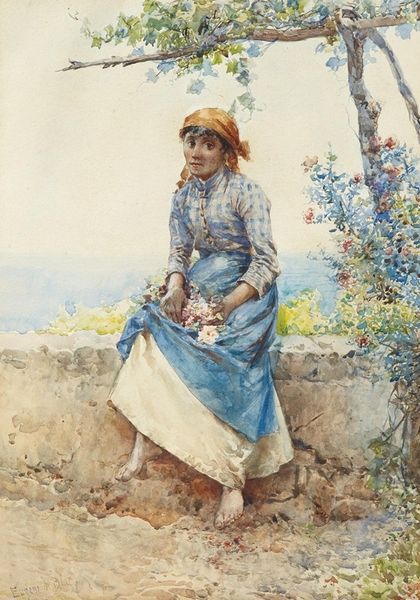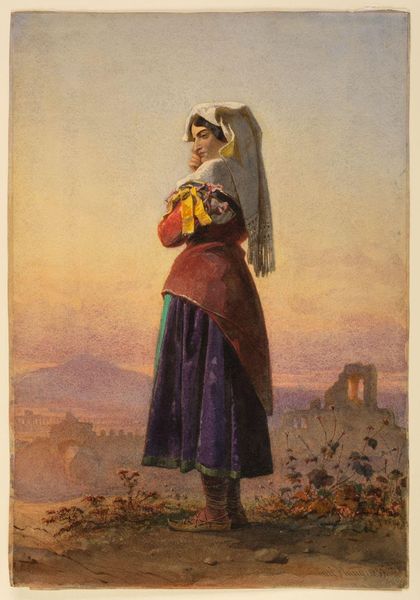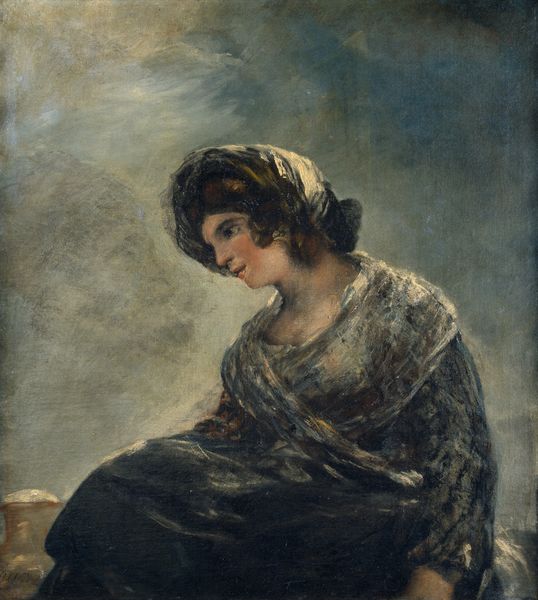
Dimensions: 70.5 x 44.7 cm
Copyright: Public domain
Editor: Here we have Ernest Hébert’s “Going to the Well,” painted in 1859. The oil paint on canvas gives the scene a soft, almost dreamlike quality. The woman seems very burdened by her task. What stands out to you? Curator: I immediately think about the intersections of labor, gender, and representation in 19th-century art. Genre paintings like this often romanticized peasant life, yet we must remember the harsh realities of rural women's existence. The woman’s posture – hand on hip, brow furrowed – hints at exhaustion, doesn’t it? But is that acknowledged, or is it still idealizing a worker? Editor: I see what you mean. There's a fine line between realism and romanticism here, isn't there? How do we interpret her bare feet on the rocky path? Curator: That detail is striking. Bare feet speak to her social standing. Consider also how the 'academic art' style often borrows and reinterprets classical forms. Think of the water carrier as a modern-day caryatid, burdened but also dignified. It connects this genre scene to grander, more traditionally 'important' subjects while subtly highlighting the disparities in lived experience. Does seeing the woman in this intersectional way change how you perceive the artwork? Editor: Definitely! It's easy to just see a pretty picture, but looking at it this way reveals a complex commentary on class, gender, and the artist's role in shaping those perceptions. Curator: Exactly. It challenges us to think about whose stories are being told and how, while understanding the historical and social elements that create these images. Editor: Thank you; now I see the art and the cultural influences around it! Curator: The piece challenges us to move beyond simple aesthetic appreciation to deeper engagement with the realities of the art world and the artist’s influences.
Comments
No comments
Be the first to comment and join the conversation on the ultimate creative platform.
